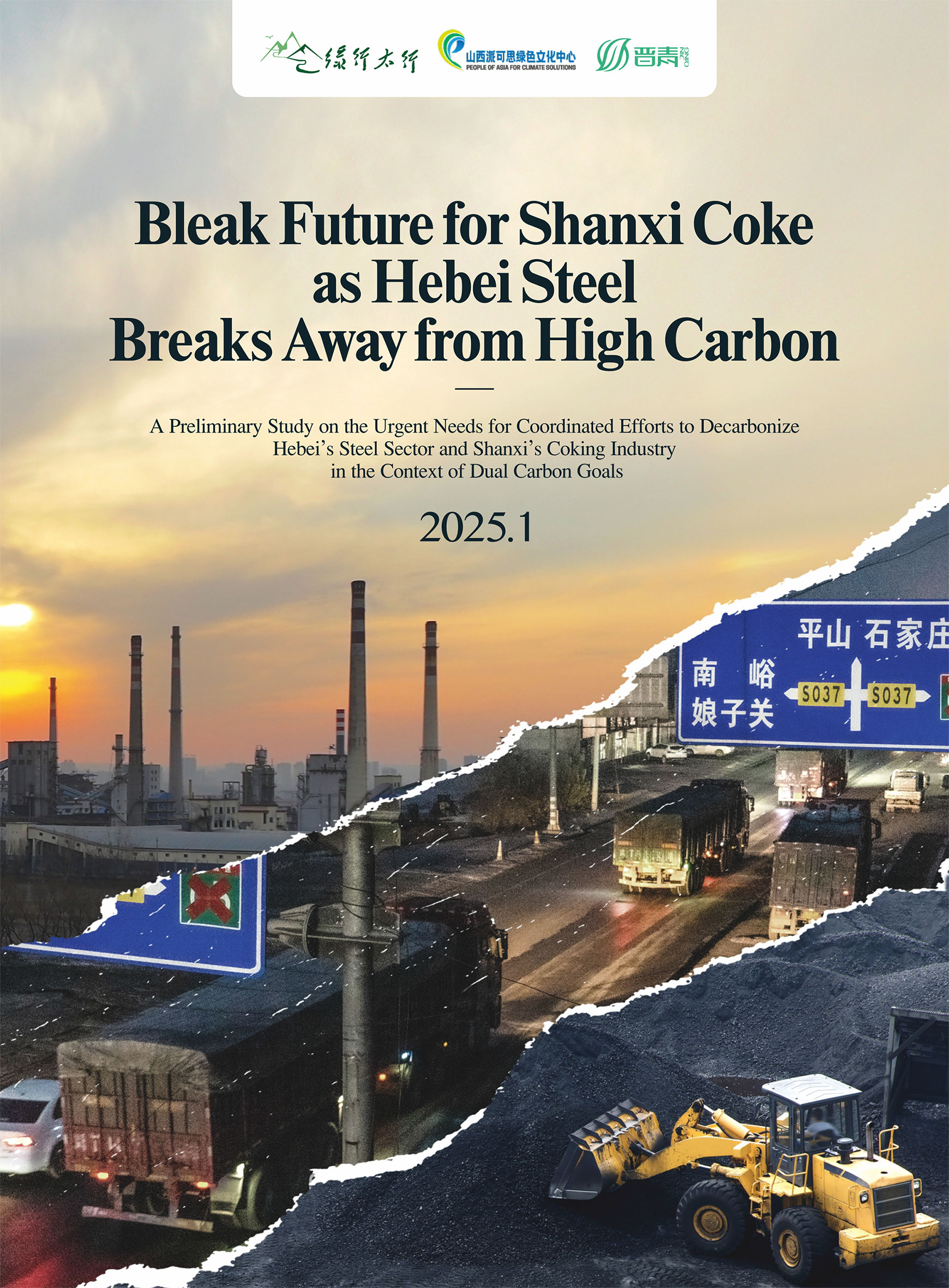Green Groups Urge China's Steel and Coke Producers for Decarbonization Coordination

January 8, 2025 - Taiyuan: Environmental groups from Hebei Province and Shanxi Province, respectively China's largest steel producer and metallurgical coal producer, have called the two provincial governments to form stronger coordination to decarbonize Hebei's steel industry while minimizing the socioeconomic impacts onto Shanxi's coking industry.
“While China's energy sector has been transitioning rapidly in the past decades towards green renewable energy, the steel sector has just barely started to prepare for a low-carbon future,” said Li Fei, Director of Green Action in Hebei, at the press conference to launch the report Bleak Future for Shanxi Coke as Hebei Steel Breaks Away from High Carbon. “The pressure is particularly high for Hebei, China's largest steel producer,” said Li, the report’s main author.
China's steel industry accounts for over 60% of the global steel carbon emissions and approximately 15% of the country's total carbon emissions. Coke is primarily used in blast furnace smelting, providing heat and acting as a reducing agent and a structural material. The coking process accounts for 15% to 30% of the carbon emissions in the steel production process, stated the report.
In order to achieve its commitments to reach carbon emission peak by 2030 and carbon neutrality by 2060, known as the Dual Carbon Goals, China has produced various guiding plans to encourage the country's steel industry to shift from the traditional high-carbon coke-relying long-process, known as furnace-basic oxygen furnace (BF-BOF) route, towards the much cleaner low-carbon electric arc furnace (EAF) short-process route. The National Implementation Plan on Reducing Pollution and Cutting Carbon Emissions jointly released in 2022 by 6 ministries including the Ministry of Ecology and Environment, the National Development and Reform Commission, and the Ministry of Industry and Information Technology, has required the steel industry to realize at least 20% of EAF by 2030.
“If Hebei province successfully achieves this target of 20% EAF by 2030, it will reduce its annual coke reliance by approximately 23 million tons, avoiding 71.32 million tons of CO2 emissions,” Li said. “That is one fifth of the industry's current total.”
“As the main coke supplier for Hebei’s steel industry, Shanxi needs to be nervously concerned about the loss of such a huge market,” said Zhao Pei, Energy Campaigner from climate advocacy group People of Asia for Climate Solutions, who supported the research and production of the report. The coking industry, which highly depends on the steel industry, could be caught unprepared with stranded assets and jobless workers if it does not improve its adaptability in an informed and timely manner, Zhao added.
Consequently, the serious overcapacity situation that is already haunting Shanxi's coking industry (with a current utilization rate of less than 70%) is bound to get starker, the groups pointed out in the report. They predict that by 2030, the excess capacity in Shanxi's coking industry could reach 66 million to 71 million tons, accounting for nearly half of the total coking capacity planned by the Shanxi Provincial Government.
“In some of these major coke producer cities, such as Changzhi City, the coking industry contributes 78% to the local gross industrial output. Therefore, any loss or shrinkage of the coke market will catch the local economy and population off guard,” said Zhao. “As China takes more actions to move all its economic sectors away from fossil fuel reliance, Shanxi coke will not be able to find another buyer to replace Hebei steel industry.”
The report offers several recommendations for Shanxi and Hebei to coordinate their efforts to escalate Hebei steel industry's green low-carbon transition while safely preparing Shanxi's coke industry for the unavoidable impacts.
For Shanxi, a complete ban on any new coking capacity must be put into place. Second, it needs to immediately and accurately assess its coking capacity and develop strategies to phase out excess capacity. Third, the province should closely monitor changes in coke demand from downstream steel producers in all other provinces. At the same time, Shanxi must develop a clear safe and just exit plan for its coke industry. Meanwhile, Shanxi and Hebei are recommended to strengthen their collaboration to synchronize efforts to decarbonize the entire supply chain. This can involve joint investments in clean technologies or shared infrastructure projects. Additionally, both provinces must ensure to provide workers in both industries upskill training and retraining opportunities to help them transition into new, sustainable industries, reducing the social costs of the shift.
“By 2050, China's steel industry overall will likely have reached carbon neutrality, leaving hardly any market for coke then,” Li warned at the end.
Download the Executive Summary, Factsheet, and images
For media inquiry, please contact Leovy Ramirez leovyramirez@greenpacs.org.cn
